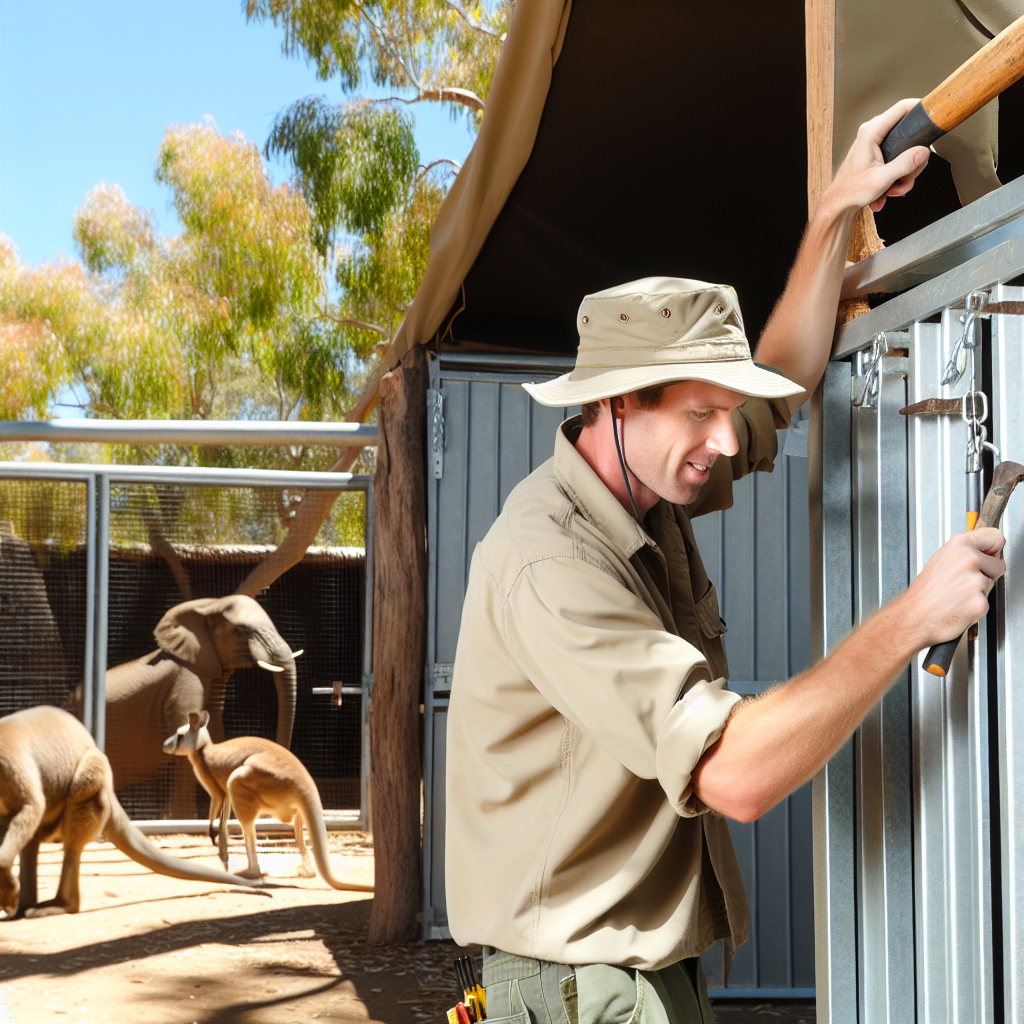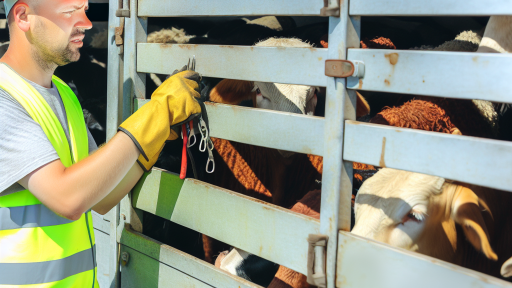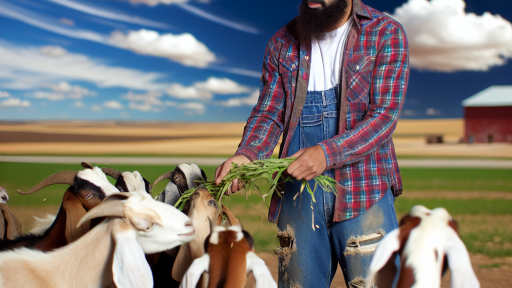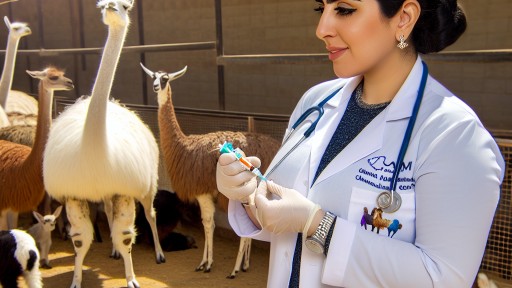Understanding the Specific Needs of Exotic Animals
Habitat Requirements
Exotic animals require specific habitats that mimic their natural environments.
For example, tropical species thrive in warm, humid conditions.
Consequently, proper climate control systems are essential.
Additionally, diverse species may need unique substrate materials.
Aquatic animals, for instance, require clean water sources.
Dietary Needs
Feeding exotic animals involves understanding their dietary preferences.
Some species consume specialized diets based on their habitats.
For instance, reptiles often need a mix of fruits, insects, and vegetation.
Moreover, consistent access to fresh water is vital for all species.
Veterinarian consultations help create balanced diets for these animals.
Social Structures
Many exotic animals thrive in social groups in the wild.
Therefore, facilities should consider their social needs during housing design.
Species such as monkeys benefit from living with their own kind.
Conversely, solitary species require private spaces.
Understanding these social dynamics promotes better animal welfare.
Transform Your Agribusiness
Unlock your farm's potential with expert advice tailored to your needs. Get actionable steps that drive real results.
Get StartedHealth and Safety Considerations
Regular health checks are crucial for exotic animals in captivity.
Facilities must have protocols for disease prevention and treatment.
For instance, proper containment helps minimize stress during examinations.
Furthermore, secure enclosures protect both animals and visitors.
Emergency plans ensure quick responses to health crises.
Behavioral Enrichment
Behavioral enrichment programs stimulate the minds of exotic animals.
These programs reduce boredom and encourage natural behaviors.
For example, providing climbing structures for arboreal species enhances their habitat.
Interactive toys also promote cognitive engagement.
Ultimately, enriching environments support overall animal well-being.
Design Principles for Secure Animal Enclosures
Understanding Basic Requirements
Secure animal enclosures must ensure the safety of both animals and visitors.
First, assess the natural behaviors of the animals being housed.
This assessment helps design enclosures that accommodate their needs.
Next, consider the specific risks associated with each species.
For instance, some animals may attempt to escape if they feel threatened.
Therefore, creating a secure, enriching environment is crucial.
Construction Materials
Choosing the right materials greatly influences enclosure security.
Use durable materials like reinforced steel for higher-risk animals.
Additionally, ensure that all materials are safe and non-toxic.
For example, use wood treatments that are free from harmful chemicals.
When possible, utilize materials that blend into the natural surroundings.
This approach minimizes stress on the animals.
Design Considerations
Design plays a vital role in the construction of animal enclosures.
Prioritize visibility through the use of transparent barriers.
Showcase Your Farming Business
Publish your professional farming services profile on our blog for a one-time fee of $200 and reach a dedicated audience of farmers and agribusiness owners.
Publish Your ProfileVisitors and caretakers benefit from being able to observe the animals closely.
Moreover, consider the layout for optimal animal movement.
Incorporate naturalistic features, such as climbing structures or hiding spots.
Regular Maintenance Protocols
Establishing regular maintenance protocols is essential for security.
Conduct routine inspections of the enclosures to identify any damage.
Prompt repairs prevent potential escape routes or safety hazards.
Furthermore, update equipment as necessary to maintain security measures.
Monitoring and Security Technology
Modern technology enhances the security of animal enclosures.
Install surveillance cameras to monitor animal behavior and visitor activities.
Using motion sensors can alert staff to unusual activities or breaches.
Additionally, consider biometric access controls for authorized personnel.
This level of surveillance increases overall safety for everyone involved.
Materials and Construction Techniques for Safety
Choosing the Right Materials
Selecting durable materials plays a crucial role in building facilities for exotic animals.
Use weather-resistant materials to withstand climate challenges.
Consider non-toxic options to ensure the safety of the animals.
Additionally, choose materials that provide adequate insulation for temperature control.
Recycled materials can also offer an environmentally friendly alternative.
Structural Considerations
Build robust structures to handle the unique needs of exotic species.
Use reinforced concrete for enclosures to enhance stability.
Designing secure fencing is paramount to prevent escapes.
Incorporate safety features such as double-gate systems.
Ensure high ceilings in habitats to accommodate climbing species.
Construction Techniques for Safety
Employ skilled workers who specialize in exotic animal facility construction.
Implement thorough safety inspections during the building process.
Use reinforced mesh in places needing higher security levels.
Additionally, avoid sharp edges and potential hazards within the enclosures.
Environmental Enrichment
Incorporate features that promote natural behaviors among exotic animals.
Add climbing structures and water features for enrichment.
Regularly assess and modify habitats based on the animals’ evolving needs.
This practice enhances animal welfare and encourages healthy interactions.
Maintenance and Upkeep
Regular maintenance ensures the longevity of the animal facilities.
Conduct routine checks on structures and materials to identify wear and tear.
Address any issues promptly to maintain a safe environment.
Furthermore, schedule periodic updates and renovations as needed.
Delve into the Subject: Waste Management In Livestock Facilities
Environmental Enrichment for Exotic Species
Importance of Environmental Enrichment
Environmental enrichment plays a vital role in animal well-being.
It enhances the physical and psychological health of exotic species.
This practice stimulates natural behaviors and instincts.
Furthermore, it reduces stress and boredom in captivity.
Types of Enrichment Strategies
Several strategies exist to enhance the environment for exotic animals.
Showcase Your Farming Business
Publish your professional farming services profile on our blog for a one-time fee of $200 and reach a dedicated audience of farmers and agribusiness owners.
Publish Your ProfileThese methods can be categorized into various types.
Physical Enrichment
Physical enrichment involves altering an animal’s habitat.
Install climbing structures, tunnels, and water features.
This type of enrichment encourages exploration and exercise.
Sensory Enrichment
Sensory enrichment stimulates the animal’s senses.
Introduce novel scents, sounds, or visual distractions.
This enhances cognitive challenges and overall engagement.
Social Enrichment
Social interaction is essential for many exotic species.
Facilitate positive interactions with other animals.
Consider pairing compatible species for social play.
Implementing Enrichment Programs
Establishing an enrichment program requires careful planning.
Involve trained staff to design tailored activities.
Regularly assess and modify enrichment strategies based on animal behavior.
Monitoring Animal Behavior
Monitoring is crucial to determine the effectiveness of enrichment.
Observe how animals respond to different stimuli.
Record behavioral changes over time to assess engagement levels.
Feedback and Improvement
Collect feedback from staff and visitors.
Use this information to improve enrichment activities.
Regular updates keep the environment dynamic and interesting.
Benefits of Environmental Enrichment
Environmental enrichment provides numerous benefits for exotic species.
It improves animals’ mental stimulation and well-being.
Moreover, it enhances the overall quality of care.
Ultimately, successful enrichment leads to healthier, happier animals.
Discover More: Sustainable Sheep Grazing Practices
Implementing Effective Security Measures
Understanding the Importance of Security
Security is crucial for protecting exotic animals.
It ensures the safety of both the animals and the public.
Furthermore, robust security measures prevent theft and poaching.
Assessing Risks and Threats
Begin by identifying potential risks to the facility.
Consider threats from both internal and external sources.
Additionally, evaluate environmental factors that could pose risks.
Designing Secure Facilities
Streamlined designs enhance overall security effectiveness.
Use durable materials resistant to tampering and damage.
Ensure all structures have controlled access points.
Implementing Surveillance Systems
Advanced surveillance systems deter unauthorized access.
Install cameras in strategic locations around the facility.
Additionally, consider motion sensors for vulnerable areas.
Training Staff on Security Protocols
Trained staff can effectively respond to security incidents.
Regular training sessions reinforce security awareness.
Moreover, create a culture of vigilance among employees.
Establishing Emergency Protocols
Prepare clear protocols for various emergency situations.
Showcase Your Farming Business
Publish your professional farming services profile on our blog for a one-time fee of $200 and reach a dedicated audience of farmers and agribusiness owners.
Publish Your ProfileEnsure all staff members are familiar with these procedures.
Additionally, conduct regular drills to practice responses.
Uncover the Details: Preparing Your Farm for Livestock Transportation

Regulatory Compliance and Best Practices
Understanding Regulatory Requirements
Organizations must adhere to various regulations governing exotic animal facilities.
These regulations ensure the safety of both animals and the public.
Health standards play a crucial role in these requirements.
Additionally, environmental impacts must be assessed and mitigated.
Balancing animal welfare with legal obligations is essential.
Establishing a Compliance Framework
A robust compliance framework facilitates regulatory adherence.
This framework should include clear policies and procedures.
Regular training can help staff understand compliance requirements.
Moreover, frequent audits will identify areas for improvement.
Consultation with legal experts can enhance compliance efforts.
Implementing Best Practices
Employ best practices to ensure safe facilities for exotic animals.
Secure enclosures prevent escape and protect public safety.
Regular maintenance is essential to uphold safety standards.
Emergency protocols should be established and practiced routinely.
Moreover, enrichment activities promote the well-being of the animals.
Collaborating with Regulatory Bodies
Building relationships with regulatory bodies can be beneficial.
These partnerships provide access to the latest guidelines and resources.
Participating in workshops and training fosters better understanding.
Furthermore, sharing knowledge can improve overall compliance efforts.
Documenting Compliance Efforts
Proper documentation is vital in demonstrating compliance.
Keep detailed records of inspections, training, and incident reports.
Regularly updating documentation ensures accuracy and transparency.
Such records can provide essential information during audits.
Proper documentation also fosters accountability within the organization.
Uncover the Details: The Role of Genetics in Meat Quality Improvement
Emergency Preparedness and Response Plans
Importance of Emergency Preparedness
Emergency preparedness is crucial for exotic animal facilities.
It ensures the safety of both animals and staff during crises.
Preparedness reduces the likelihood of injuries and damages.
Moreover, it enables a swift recovery after emergencies.
Assessment of Potential Risks
Begin by identifying potential risks in the facility.
Common risks include natural disasters, fires, and escapes.
Involve staff in assessing these risks systematically.
Conduct regular risk assessments to stay updated.
Developing an Emergency Response Plan
Create a detailed emergency response plan for the facility.
The plan should outline specific actions for different scenarios.
Include evacuation procedures for staff and animals.
Establish communication protocols during emergencies.
Showcase Your Farming Business
Publish your professional farming services profile on our blog for a one-time fee of $200 and reach a dedicated audience of farmers and agribusiness owners.
Publish Your ProfileTraining and Drills
Regular training ensures staff are prepared for emergencies.
Conduct drills to practice emergency procedures effectively.
Use these drills to identify weaknesses in the plan.
Additionally, provide specialized training for animal handling.
Emergency Supplies and Resources
Stock necessary emergency supplies to be fully prepared.
Include first aid kits, food, and other essential items.
Ensure that resources are accessible during an emergency.
Regularly check and replenish supplies as needed.
Collaboration with Local Authorities
Establish relationships with local emergency services.
Collaborate on emergency planning and response strategies.
Inform them about the unique needs of exotic animals.
Conduct joint drills to improve overall response coordination.
Communication with Stakeholders
Maintain open communication with all stakeholders.
Share your emergency preparedness plan with relevant parties.
Update them regularly on changes to the plan.
Include information about emergency contact numbers.
Education and Training for Staff and Visitors
Importance of Education
Education plays a crucial role in maintaining safety in facilities with exotic animals.
Staff members need comprehensive training to understand animal behavior and safety protocols.
Consequently, visitors should also receive guidance to ensure overall safety.
Training Programs for Staff
Staff training programs must cover animal handling, care, and basic first aid.
Regular workshops ensure staff remain knowledgeable about the latest safety practices.
Additionally, simulation exercises can help staff respond effectively in emergencies.
Visitor Education Initiatives
Visitor education initiatives are essential for promoting a safe environment.
Informational materials should explain specific regulations and safety rules.
Guided tours can reinforce proper behavior around exotic animals.
Continuous Learning and Improvement
Continuous learning is vital for both staff and visitors.
Implementing periodic refresher courses helps maintain high safety standards.
Feedback from visitors can also provide insights for further improvements.




